Because the chain’s sales practices were famously low-pressure and consultative in nature, customers routinely purchased the right mattress for their needs. The CEO surmised that his company’s superior approach to sales was the reason their average ticket exceeded the industry’s. But he never gave much thought to the company’s far lower than average product return rate, which was also a byproduct of sales methods that prioritized customer satisfaction over a fast buck.
In fact, the number of returns for our client’s mattress chain were inconsequential compared to the balance of the category and especially low by comparison with the category leader, which was well known for their hard-closing conquest approach to sales. This was a significant but hidden challenger advantage, and our client hadn’t leveraged it at all.
On the contrary, his chain had been following the category norm for mattress returns, which was a particular pain point for customers. The category’s standard 30-day return policies are intentionally and notoriously draconian because, as anyone who’s ever shopped for a mattress knows, high-pressure mattress sales practices result in extreme levels of post-purchase dissatisfaction. Making it easy for customers to return the product would devastate operations and sales for most chains in the mattress category.
The way the category was zigging in this respect presented the perfect opportunity for our new client to zag. So, our agency made a bold recommendation straight out of the challenger branding playbook. We told the CEO to overhaul his return policy and make it not only easier for customers to return products they were unhappy with, but to give them one full year to sleep on their decision.
A month later, we rolled out an advertising campaign promoting the mattress category’s first and only no-questions-asked, one-year money-back guarantee. It was a revolutionary challenger move that turned category convention on its ear and in so doing caused sales to spike 30 percent the very first month.
That quick success was followed by months on end of year-over-year double-digit increases that climbed as high as 50 percent. My favorite part of this challenger success story was the attempt by category killer Mattress Firm to match our client’s one-year offer only to quickly yank it back after being swamped with returns. Mattress Firm hadn’t operationalized the consultative sales approach like our client had, so the poor result for them was inevitable.
Using company culture to create brand advantage.
This fact underscores an important lesson the folks at Eat Big Fish take great pains to drive home. Challengers have to be willing and able to do something competitors can’t or simply won’t to create clear and relevant distinction for their brand. The magic wasn’t in our client’s one-year guarantee. It was in the many hours of training each of the company’s sales associates had to go through before hitting their showroom floors. It was this focus on selling the right way that made such an audacious guarantee possible at all. Our client had operationalized a sales process that wasn’t easy to detect by competitors and no easier to replicate by any who had.
Intentional or otherwise, the CEO’s focus on sales had created a true brand advantage for his company, and that advantage made the job of advertising easy. Even the best advertising is no substitute for meaningful brand distinction anchored to a real consumer insight. Challengers that understand this and are willing to do what it takes to create a genuine distinction are awfully hard to beat.
But there was a second important lesson buried in our client’s success that’s become even more evident to me in the years since we hit that first challenger home run. Our mattress client’s sales process was supported and reinforced by something far more powerful than top-down mandates and training alone.







